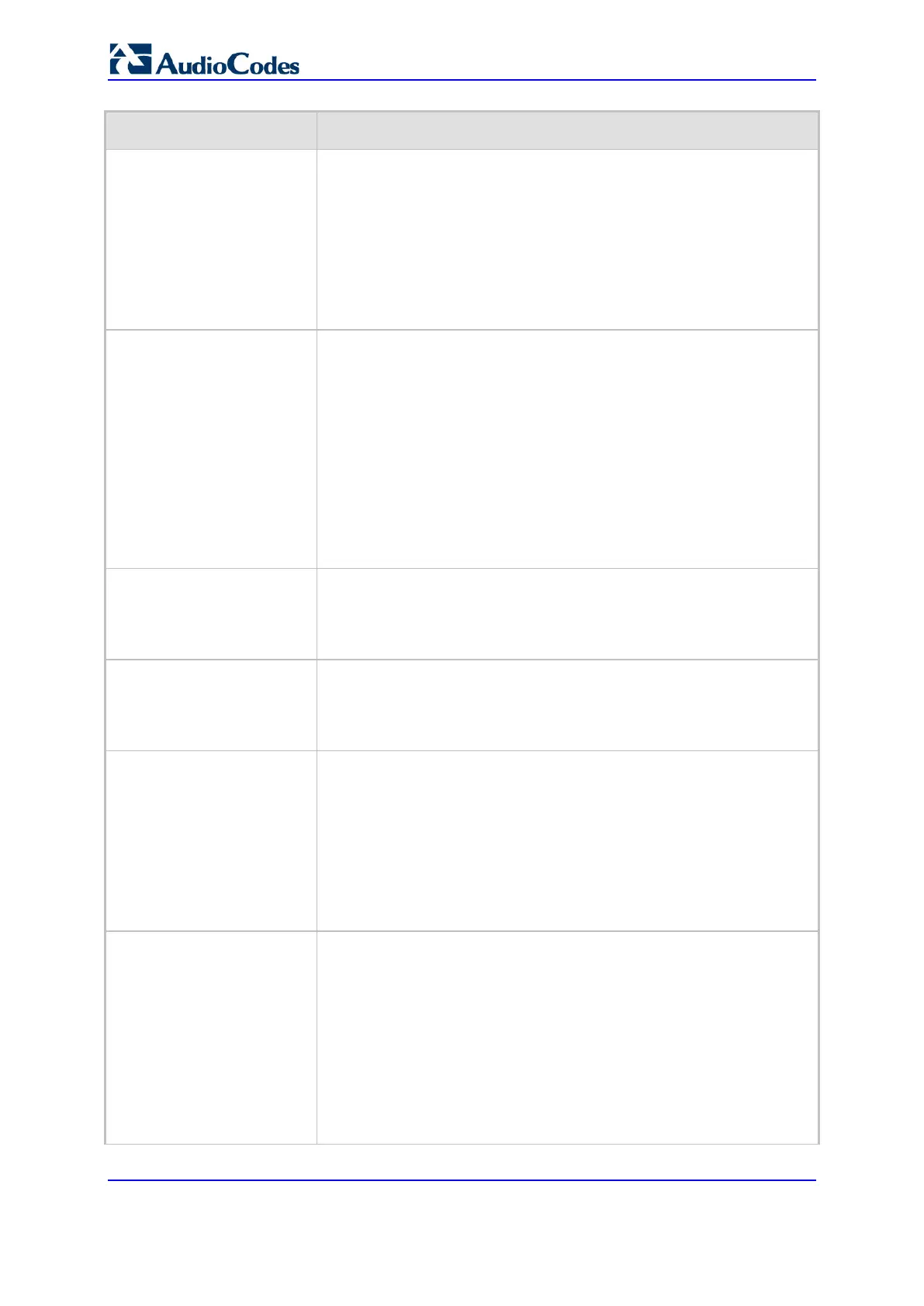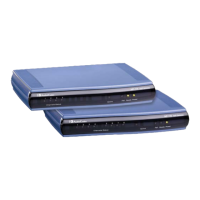User's Manual 992 Document #: LTRT-27045
Mediant 1000B Gateway & E-SBC
Parameter Description
[3] Don’t Reply and Send = Both options [1] and [2] are applied.
Note:
The parameter is only applicable to digital interfaces.
When the parameter is set to not respond to SIP OPTIONS
received from the proxy, it is applicable only if the OPTIONS
message does not include a user part in the Request-URI.
The proxy server is determined by the Proxy Set that is associated
with the Serving IP Group defined for the Trunk Group in the Trunk
Group Settings table.
TDM Over IP Mini
For Trunk Activation
[TDMOverIPMinCallsForTru
nkActivation]
Defines the minimal number of SIP dialogs that must be established
when using TDM Tunneling, for the specific trunk to be considered
active.
When using TDM Tunneling, if calls from this defined number of B-
channels pertaining to a specific Trunk fail (i.e., SIP dialogs are not
correctly set up), an AIS alarm is sent on this trunk toward the PSTN
and all current calls are dropped. The originator gateway continues the
INVITE attempts. When this number of calls succeed (i.e., SIP dialogs
are correctly set up), the AIS alarm is cleared.
The valid range is 0 to 31. The default is 0 (i.e., don't send AIS
alarms).
Note: TDM Tunneling is applicable only to E1/T1 interfaces.
[TDMoIPInitiateInviteTime] Defines the time (in msec) between the first INVITE issued within the
same trunk when implementing the TDM tunneling application.
The valid value range is 500 to 1000. The default is 500.
Note: TDM Tunneling is applicable only to E1/T1 interfaces.
[TDMoIPInviteRetryTime] Defines the time (in msec) between call release and a new INVITE
when implementing the TDM tunneling application.
The valid value range is 10,000 to 20,000. The default is 10,000.
Note: TDM Tunneling is applicable only to E1/T1 interfaces.
Fax Signaling Method
fax-sig-method
[IsFaxUsed]
Global parameter defining the SIP signaling method for establishing
and transmitting a fax session when the device detects a fax.
You can also configure this functionality per specific calls, using IP
Profiles (IpProfile_IsFaxUsed) and Tel Profiles (TelProfile_IsFaxUsed).
For a detailed description of the parameter, see ''Configuring IP
Profiles'' on page 393 and Configuring Tel Profiles on page 428.
Note: If this functionality is configured for a specific IP Profile or Tel
Profile, the settings of this global parameter is ignored for calls
associated with the IP Profile or Tel Profile.
fax-vbd-behvr
[FaxVBDBehavior]
Determines the device's fax transport behav
is negotiated at call start.
[0] = (Default) If the device is configured with a VBD coder (see the
CodersGroup parameter) and is negotiated OK at call start, then
both fax and modem signals are sent over RTP using the bypass
payload type (and no mid-call VBD or T.38 Re-INVITEs occur).
[1] = If the IsFaxUsed parameter is set to 1, the channel opens with
the FaxTransportMode parameter set to 1 (relay). This is required
to detect mid-call fax tones and to send T.38 Re-INVITE messages
upon fax detection. If the remote party supports T.38, the fax is
relayed over T.38.

